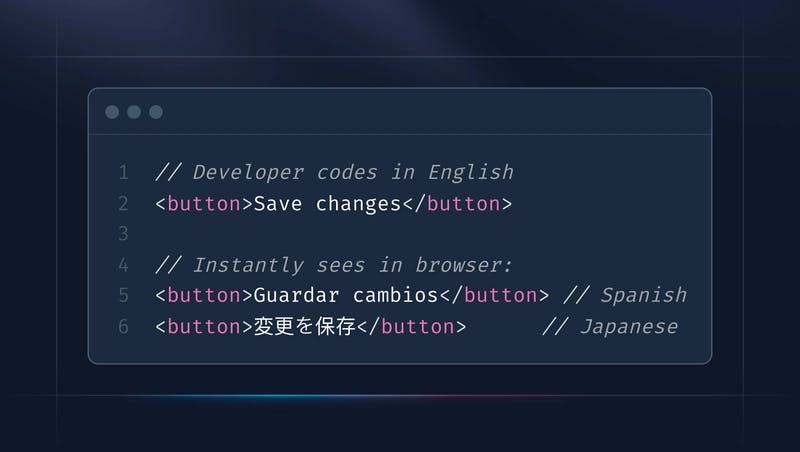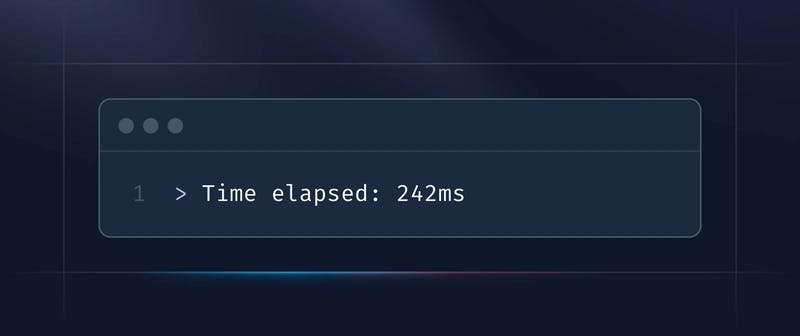Introducing Lingo.dev Compiler: localize React apps without rewriting your components' code
Today, we're introducing Lingo.dev Compiler: an npm library, that lets you build multilingual React apps without having to rewrite the existing React code.
It doesn't require extracting i18n keys, or wrapping text in tags. 100% free and open-source.
Here's how it works: https://x.com/MaxPrilutskiy/status/1929946504216932746
The core challenge we had was - how do you translate React components without touching the source code?
Traditional i18n requires rewriting your entire codebase - extracting strings to JSON files, wrapping components in `<Translation />` tags, maintaining separate dictionaries.
So, we asked ourselves: "What if that actually wasn't necessary?"
AST
So, we came up with this idea to processes React app's Abstract Syntax Tree and perform localization at build time.
But here's the tricky part: we had to solve how to deterministically group elements that should be translated together.
For example, this entire block gets processed as one translation unit:

Not three separate fragments that lose meaning when isolated. This prevents mistranslations and maintains semantic relationships that LLMs need for context.
HMR
Next, the biggest technical uncertainty was Hot Module Replacement compatibility.
We were lucky to solve this one pretty quickly, but picture this: you're coding in English but need to instantly see how your UI looks in Spanish or Japanese. Text expansion/contraction can break layouts in ways you'd never catch otherwise.

We rebuilt our processor several times to work seamlessly with HMR, so there’s no need in building twice to see translations.
Performance
Large codebases, including ours, can't afford slow incremental builds, so performance was another beast entirely.
We're talking about processing thousands of components, each potentially containing dozens of translatable strings.

Our solution: aggressive caching that stores AST analysis results between runs + heavily parallelized LLM calls. Also Groq. So, only changed components get reprocessed. Everything else hits the cache.
By the way
What's interesting, is that this approach was technically possible before LLMs, but practically useless. You'd still need human translators familiar with your product domain for precise translations. The AST processing was just expensive preprocessing for manual work.
However now, with context-aware models, we can generate quality translations automatically. That's why compile-time, AI-powered localization isn't just possible – it's becoming the most practical approach for modern UIs.
We predict this compile-time approach will become standard. Think about it: why should developers maintain separate translation files when the compiler can generate them automatically?
Major i18n libraries will adopt similar AST-based models. Frameworks like Next.js and Remix will eventually bake this directly into their core. The traditional extract-wrap-maintain cycle is becoming obsolete.
Frameworks
Here's how we handle framework integration:
// Next.js
export default lingoCompiler.next({
sourceLocale: "en",
targetLocales: ["es", "fr", "de"],
models: { "*:*": "groq:mistral-saba-24b" }
})(nextConfig);Works with Next.js App Router, React Router, Remix, and Vite. Zero runtime cost - translations are pre-compiled into optimized bundles.
The compiler creates versioned dictionaries using MD5 fingerprinting.
// Generated in lingo/ directory
{
"content": "Welcome to our platform!",
"fingerprint": "a1b2c3d4e5f6",
"translations": {
"es": "¡Bienvenido a nuestra plataforma!",
"fr": "Bienvenue sur notre plateforme!"
}
}Only retranslates when content actually changes. Git integration tracks translation history. Delta processing minimizes costs.
Bonus
Bonus feature I didn't mention: the compiler gracefully handles dynamic React patterns too:
// Compiler handles dynamic content gracefully
function UserGreeting({ name, count }) {
return (
div
Welcome back, {name}! You have {count} messages.
/div
);
}
// Preserves React behavior while translating static text
// "Welcome back" + "You have" + "messages" get translated
// {name} and {count} remain dynamicWe were able to get the best of both worlds - no code changes + full React compatibility.
Workflow
The development workflow is beautifully simple:
Write React components using natural language text
Run development server - compiler extracts and translates content, using your API key
Commit translation files to version control
Deploy with built-in multilingual support
No configuration files to maintain. No manual string extraction. Just build and ship.
Next steps
Break it, test it, let us know what you think!
Here’s how to get started:
npm i lingo.devDocs: https://lingo.dev/compiler
GitHub: https://github.com/lingodotdev/lingo.dev
Discord: https://lingo.dev/go/discord



Replies